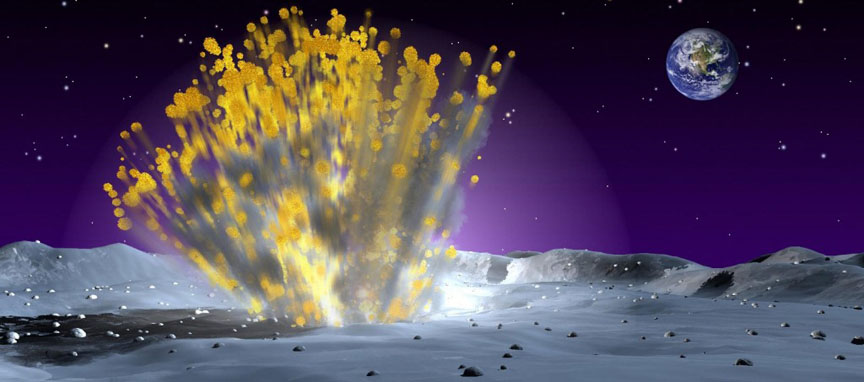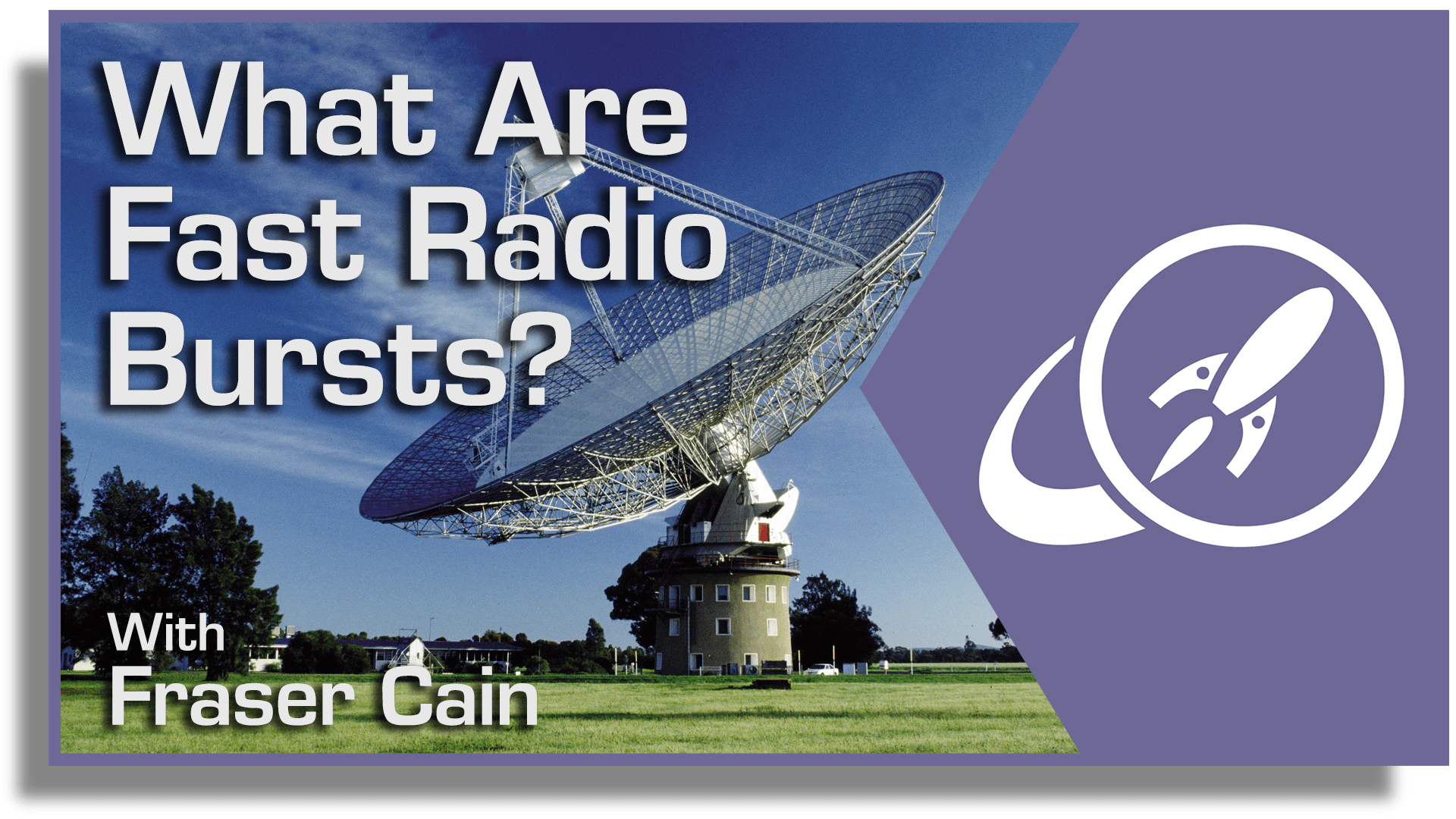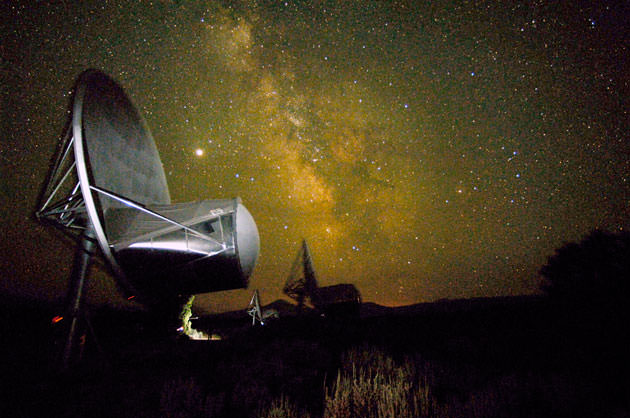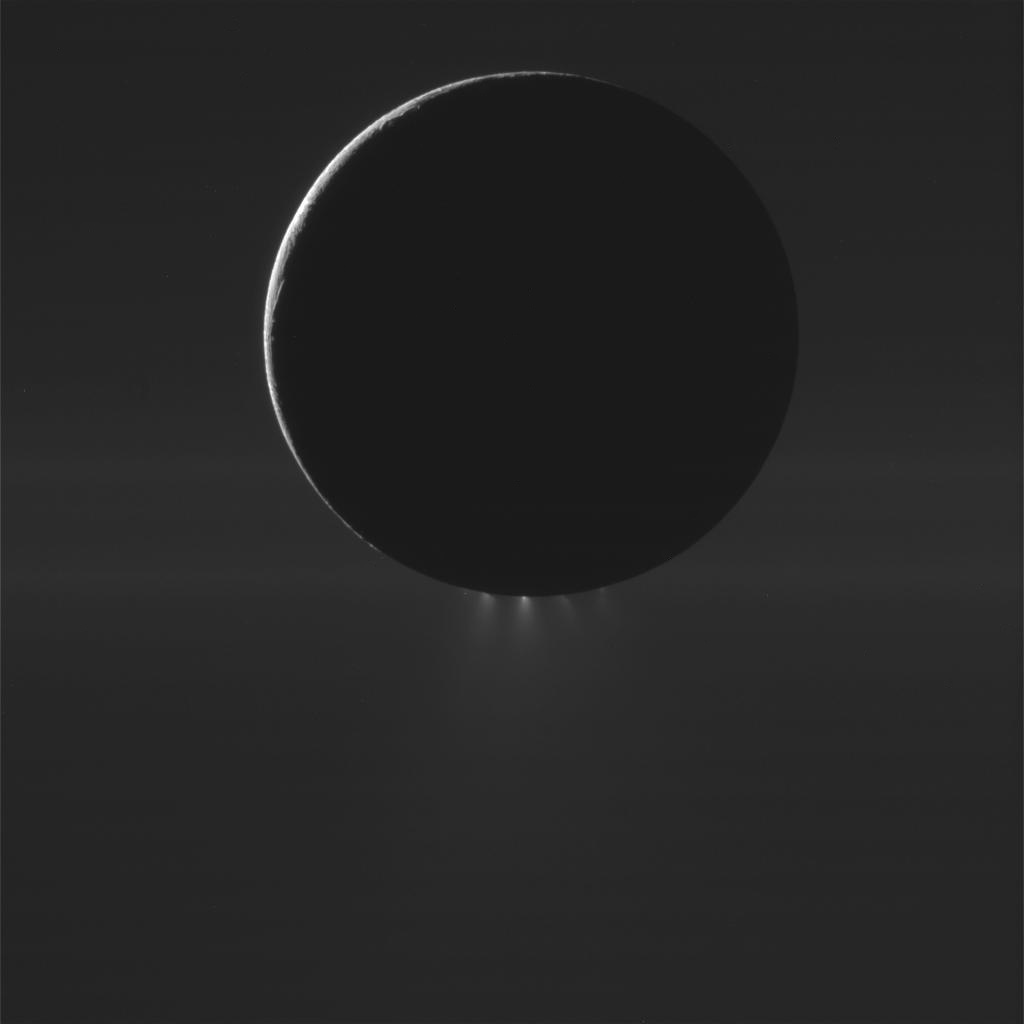I’ve been an avid stargazer for a fair few decades now and not once have I seen anything that makes me believe we are being visited by aliens! My own experiences aside, there’s no evidence of alien visitations but it seems much of the population believes anything that they cannot immediately identify in the sky MUST be ailens. A new paper suggests there are costs associated with increasing claims such as disctractions to government programs and background noise that hampers science communication. How on Earth should we deal with it? If debunking doesn’t work, then maybe its time for a scientific investigation.
Continue reading “Are Claims of Alien Visitation Causing a Problem to Society?”Giant Meteor Impacts Might Have Triggered Early Earth’s Plate Tectonics

Plate tectonics have played a vital role in the geological evolution of our planet. In addition, many scientists believe that Earth’s geologically activity may have played an important role in the evolution of life – and could even be essential for a planet’s habitability. For this reason, scientists have long sought to determine how and when Earth’s surface changed from molten, viscous rock to a solid crust that is constantly resurfacing.
Read moreBy Continuously Watching the Moon, we Could Detect Interstellar Meteorites
When ‘Oumuamua crossed Earth’s orbit on October 19th, 2017, it became the first interstellar object to ever be observed by humans. These and subsequent observations – rather than dispelling the mystery of ‘Oumuamua’s true nature – only deepened it. While the debate raged about whether it was an asteroid or a comet, with some even suggesting it could be an extra-terrestrial solar sail.
In the end, all that could be said definitively was that ‘Oumuamua was an interstellar object the likes of which astronomers had never before seen. In their most recent study on the subject, Harvard astronomers Amir Siraj and Abraham Loeb argue that such objects may have impacted on the lunar surface over the course of billions of years, which could provide an opportunity to study these objects more closely.
Continue reading “By Continuously Watching the Moon, we Could Detect Interstellar Meteorites”What Are Fast Radio Bursts?
You might think you’re reading an educational website, where I explain fascinating concepts in space and astronomy, but that’s not really what’s going on here.
What’s actually happening is that you’re tagging along as I learn more and more about new and cool things happening in the Universe. I dig into them like a badger hiding a cow carcass, and we all get to enjoy the cache of knowledge I uncover.
Okay, that analogy got a little weird. Anyway, my point is. Squirrel!
Fast radio bursts are the new cosmic whatzits confusing and baffling astronomers, and now we get to take a front seat and watch them move through all stages of process of discovery.
Stage 1: A strange new anomaly is discovered that doesn’t fit any current model of the cosmos. For example, strange Boyajian’s Star. You know, that star that probably doesn’t have an alien megastructure orbiting around it, but astronomers can’t rule that out just yet?
Stage 2: Astronomers struggle to find other examples of this thing. They pitch ideas for new missions and scientific instruments. No idea is too crazy, until it’s proven to be too crazy. Examples include dark matter, dark energy, and that idea that we’re living in a
Stage 3: Astronomers develop a model for the thing, find evidence that matches their predictions, and vast majority of the astronomical community comes to a consensus on what this thing is. Like quasars and gamma ray bursts. YouTuber’s make their videos. Textbooks are updated. Balance is restored.
Today we’re going to talk about Fast Radio Bursts. They just moved from Stage 1 to Stage 2. Let’s dig in.
Fast radio bursts, or FRBs, or “Furbys” were first detected in 2007 by the astronomer Duncan Lorimer from West Virginia University.
He was looking through an archive of pulsar observations. Pulsars, of course, are newly formed neutron stars, the remnants left over from supernova explosions. They spin rapidly, blasting out twin beams of radiation. Some can spin hundreds of times a second, so precisely you could set your watch to them.
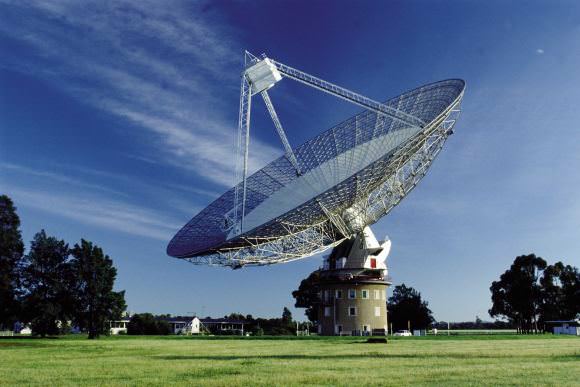
In this data, Lorimer made a “that’s funny” observation, when he noticed one blast of radio waves that squealed for 5 milliseconds and then it was gone. It didn’t match any other observation or prediction of what should be out there, so astronomers set out to find more of them.
Over the last 10 years, astronomers have found about 25 more examples of Fast Radio Bursts. Each one only lasts a few milliseconds, and then fades away forever. A one time event that can appear anywhere in the sky and only last for a couple milliseconds and never repeats is not an astronomer’s favorite target of study.
Actually, one FRB has been found to repeat, maybe.
The question, of course, is “what are they?”. And the answer, right now is, “astronomers have no idea.”
In fact, until very recently, astronomers weren’t ever certain they were coming from space at all. We’re surrounded by radio signals all the time, so a terrestrial source of fast radio bursts seems totally logical.
About a week ago, astronomers from Australia announced that FRBs are definitely coming from outside the Earth. They used the Molonglo Observatory Synthesis Telescope (or MOST) in Canberra to gather data on a large patch of sky.
Then they sifted through 1,000 terabytes of data and found just 3 fast radio bursts. Three.
Since MOST is farsighted and can’t perceive any radio signals closer than 10,000 km away, the signals had to be coming outside planet Earth. They were “extraterrestrial” in origin.
Right now, fast radio bursts are infuriating to astronomers. They don’t seem to match up with any other events we can see. They’re not the afterglow of a supernova, or tied in some way to gamma ray bursts.
In order to really figure out what’s going on, astronomers need new tools, and there’s a perfect instrument coming. Astronomers are building a new telescope called the Canadian Hydrogen Intensity Mapping Experiment (or CHIME), which is under construction near the town of Penticton in my own British Columbia.
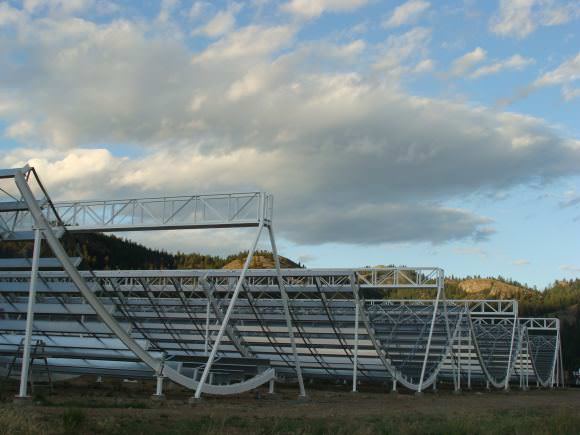
It looks like a bunch of snowboard halfpipes, and its job will be to search for hydrogen emission from distant galaxies. It’ll help us understand how the Universe was expanding between 7 and 11 billion years ago, and create a 3-dimensional map of the early cosmos.
In addition to this, it’s going to be able to detect hundreds of fast radio bursts, maybe even a dozen a day, finally giving astronomers vast pools of signals to study.
What are they? Astronomers have no idea. Seriously, if you’ve got a good suggestion, they’d be glad to hear it.
In these kinds of situations, astronomers generally assume they’re caused by exploding stars in some way. Young stars or old stars, or maybe stars colliding. But so far, none of the theoretical models match the observations.
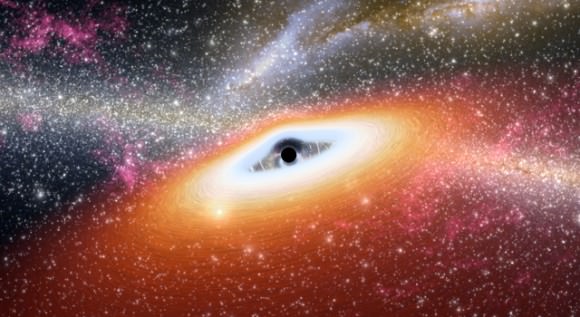
Another idea is black holes, of course. Specifically, supermassive black holes at the hearts of distant galaxies. From time to time, a random star, planet, or blob of gas falls into the black hole. This matter piles upon the black hole’s event horizon, heats up, screams for a moment, and disappears without a trace. Not a full on quasar that shines for thousands of years, but a quick snack.
The next idea comes with the only repeating fast radio burst that’s ever been found. Astronomers looked through the data archive of the Arecibo Observatory in Puerto Rico and found a signal that had repeated at least 10 times in a year, sometimes less than a minute apart.
Since the quick blast of radiation is repeating, this rules out a one-time collision between exotic objects like neutron stars. Instead, there could be a new class of magnetars (which are already a new class of neutron stars), that can release these occasional shrieks of radio.
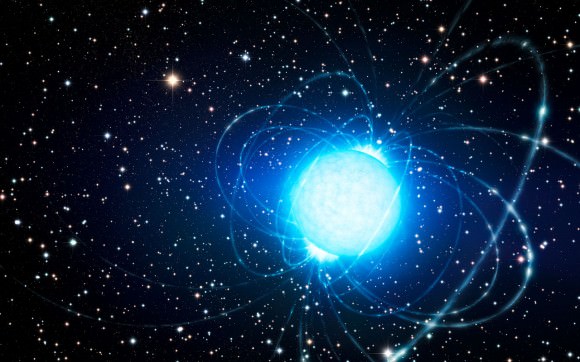
Or maybe this repeating object is totally different from the single events that have been discovered so far.
Here’s my favorite idea. And honestly, the one that’s the least realistic. What I’m about to say is almost certainly not what’s going on. And yet, it can’t be ruled out, and that’s good enough for my fertile imagination.
Avi Loeb and Manasvi Lingam at Harvard University said the following about FRBs:
“Fast radio bursts are exceedingly bright given their short duration and origin at distances, and we haven’t identified a possible natural source with any confidence. An artificial origin is worth contemplating and checking.”
Artificial origin. So. Aliens. Nice.
Loeb and Lingam calculated how difficult it would be to send a signal that strong, that far across the Universe. They found that you’d need to build a solar array with twice the surface area of Earth to power the radio wave transmitter.
And what would you do with a transmission of radio or microwaves that strong? You’d use it to power a spacecraft, of course. What we’re seeing here on Earth is just the momentary flash as a propulsion beam sweeps past the Solar System like a lighthouse.
But in reality, this huge solar array would be firing out a constant beam of radiation that would propel a massive starship to tremendous speeds. Like the Breakthrough Starshot spacecraft, but for million tonne spaceships.
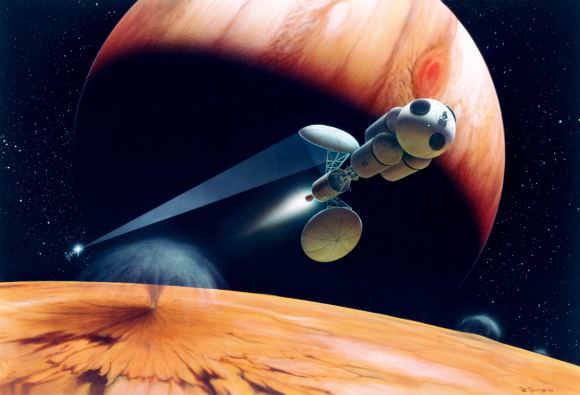
In other words, we could be witnessing alien transportation systems, pushing spacecraft with beams of energy to other worlds.
And I know that’s probably not what’s happening. It’s not aliens. It’s never aliens. But in my mind, that’s what I’m imagining.
So, kick back and enjoy the ride. Join us as we watch astronomers struggle to understand what fast radio bursts are. As they invalidate theories, and slowly unlock one of the most thrilling mysteries in modern astronomy. And as soon as they figure it out, I’ll let you know all about it.
What do you think? Which explanation for fast radio bursts seems the most logical to you? I’d love to hear your thoughts and wild speculation in the comments.
Do I Believe in UFOs?
Whenever I do a new livestream on Instagram (hint hint, @universetoday on Instagram), it’s generally with an audience that doesn’t have a lot of experience with my work here on Universe Today or YouTube.
They’re enthusiastic about space, but they haven’t been exposed to a lot of the modern ideas about astrobiology and the search for extraterrestrials. They have, however, seen a lot of TV and movies.
Continue reading “Do I Believe in UFOs?”Will We Find Alien Life Within 20 Years? You Can Bet On It.
During a hearing last week before the U.S. House Science and Technology Committee SETI scientists Seth Shostak and Dan Werthimer asserted that solid evidence for extraterrestrial life in our galaxy — or, at the very least, solid evidence for a definitive lack of it — will come within the next two decades. It’s a bold claim for scientists to make on public record, but one that Shostak has made many times before (and he’s not particularly off-schedule either.) And with SETI’s Allen Telescope Array (ATA) continually scanning the sky for any signals that appear intentional, exoplanets being discovered en masse, and new technology on deck that can further investigate a select few of their (hopefully) Earth-like atmospheres, the chances that alien life — if it’s out there — will be found are getting better and better each year.
Would you put your bet on E.T. being out there? Actually, you can.
Thanks to the internet and the apparently incorrigible human need to compete you can actually place a wager on when alien life will be discovered, via an Irish online betting site.
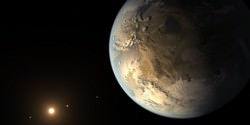
Typically focused on the results of international sporting matches, PaddyPower.com has also included the announcement of extraterrestrial life in its novelty bet section, hinging on “the sitting President of the USA making a statement confirming without doubt the existence of alternative life beings from another planet.” The odds of such an announcement being made in the years 2015-2018 are currently listed at 100 to one. After that they drop significantly… probably because by then the JWST will be in operation and we will “have the technology.” Stranieri.com also has offered a chance for Italian players of chance to bet on the sitting president discussing life from other planets, with betting open until 2025 for long-term gamblers!
Of course, whether you personally would place a wager on such things is purely personal preference, and neither I nor Universe Today condones or supports gambling, for aliens or otherwise. (And the legalities of doing so and any and all results thereof are the sole responsibility of the reader.) But it is interesting that we now live in a time when wagering on the discovery of alien life sits just a click away from the results of the Kentucky Derby, French Open, or World Cup.
Now if you really want to support the science that will make such a discovery possible — maybe even within our own Solar System — you can “stand up for space” and write your representatives to tell them you want NASA’s planetary science budget to be funded, and rather than gamble your money you can make a donation to support SETI’s ongoing mission here (or even help out yourself via SETI@home.)
And even if all else fails, you could end up with a free coffee courtesy of Dr. Shostak…
Learn more about SETI and how the ATA works here, and read Dan Werthimer’s May 21 statement to the House Committee here.
Source/ht: FloridaToday Space and The Independent
“Two possibilities exist: either we are alone in the Universe or we are not. Both are equally terrifying.”
– Arthur C. Clarke
Aliens Don’t Want To Eat Us, Says Former SETI Director
[/caption]
Alien life probably isn’t interested in having us for dinner, enslaving us or laying eggs in our bellies, according to a recent statement by former SETI director Jill Tarter.
(Of course, Hollywood would rather have us think otherwise.)
In a press release announcing the Institute’s science and sci-fi SETIcon event, taking place June 22 – 24 in Santa Clara, CA, Tarter — who was the inspiration for Jodie Foster’s character in the film “Contact” — disagreed with both filmmakers and Stephen Hawking over the portrayal of extraterrestrials as monsters hungry for human flesh.
“Often the aliens of science fiction say more about us than they do about themselves,” Tarter said. “While Sir Stephen Hawking warned that alien life might try to conquer or colonize Earth, I respectfully disagree. If aliens were able to visit Earth that would mean they would have technological capabilities sophisticated enough not to need slaves, food, or other planets. If aliens were to come here it would be simply to explore.
“Considering the age of the universe, we probably wouldn’t be their first extraterrestrial encounter, either. We should look at movies like ‘Men in Black III,’ ‘Prometheus’ and ‘Battleship’ as great entertainment and metaphors for our own fears, but we should not consider them harbingers of alien visitation.”

Tarter, 68, recently announced her stepping down as director of SETI in order to focus on funding for the Institute, which is currently running only on private donations. Funding SETI, according to Tarter, is investing in humanity’s future.
“Think about it. If we detect a signal, we could learn about their past (because of the time their signal took to reach us) and the possibility of our future. Successful detection means that, on average, technologies last for a long time. Understanding that it is possible to find solutions to our terrestrial problems and to become a very old civilization, because someone else has managed to do just that, is hugely important! Knowing that there can be a future may motivate us to achieve it.”
On the other hand, concern that searching the sky for signs of life — as well as sending out your own — could call down hungry alien monsters would make a good case for keeping quiet. And a quiet search may not get the necessary funding to keep going. I can see where Tarter is coming from.
Let’s just hope she’s right. (About the eating part, at least.)
Top image: Alien 3, © 20th Century Fox. Tip of the tinfoil hat to EarthSky.org.
“Snowing Microbes” On Saturn’s Moon?
[/caption]
Enceladus, Saturn’s 318-mile-wide moon that’s become famous for its ice-spraying southern jets, is on astronomers’ short list of places in our own solar system where extraterrestrial life could be hiding — and NASA’s Cassini spacecraft is in just the right place to try and sniff it out.
On March 27, Cassini came within 46 miles (74 km) of Enceladus’ south pole, the region where the moon’s many active water-ice jets originate from. This was Cassini’s closest pass yet over the southern pole, allowing the spacecraft to use its ion and neutral mass spectrometer — as well as its plasma spectrometer, recently returned to service — to taste the icy spray emanating from deep fissures called “tiger stripes” that scar Enceladus’ surface.
(Fly along with Cassini toward Enceladus’ jets here.)
“More than 90 jets of all sizes near Enceladus’s south pole are spraying water vapor, icy particles, and organic compounds all over the place,” said Carolyn Porco, planetary scientist and Cassini Imaging science team leader. “Cassini has flown several times now through this spray and has tasted it. And we have found that aside from water and organic material, there is salt in the icy particles. The salinity is the same as that of Earth’s oceans.”
In addition to water, salt and organics, there is also a surprising amount of heat — heat generated in part by tidal friction, helping keep Enceladus’ underground water reserves liquid.
“If you add up all the heat, 16 gigawatts of thermal energy are coming out of those cracks,” Porco said.
This creates, in effect, a so-called “Goldilocks zone” of potential habitability orbiting around Saturn… a zone that Cassini has easy access to.
“It’s erupting out into space where we can sample it. It sounds crazy but it could be snowing microbes on the surface of this little world,” Porco said. “In the end, it’s the most promising place I know of for an astrobiology search. We don’t even need to go scratching around on the surface. We can fly through the plume and sample it. Or we can land on the surface, look up and stick our tongues out. And voilà…we have what we came for.”
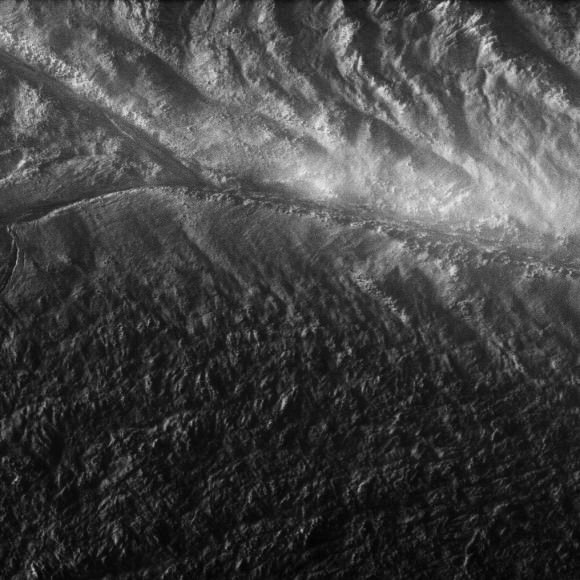
Cassini’s latest results — and images! — from the flyby should be landing on Earth any time now. Stay tuned to Universe Today for more updates on Cassini and Enceladus.
Read more on NASA Science News here.
Image credits: NASA/JPL/SSI.
UPDATE: For images from Cassini’s flyby, showing closeups of Enceladus as well as Dione and Janus, check out the CICLOPS team page here.


